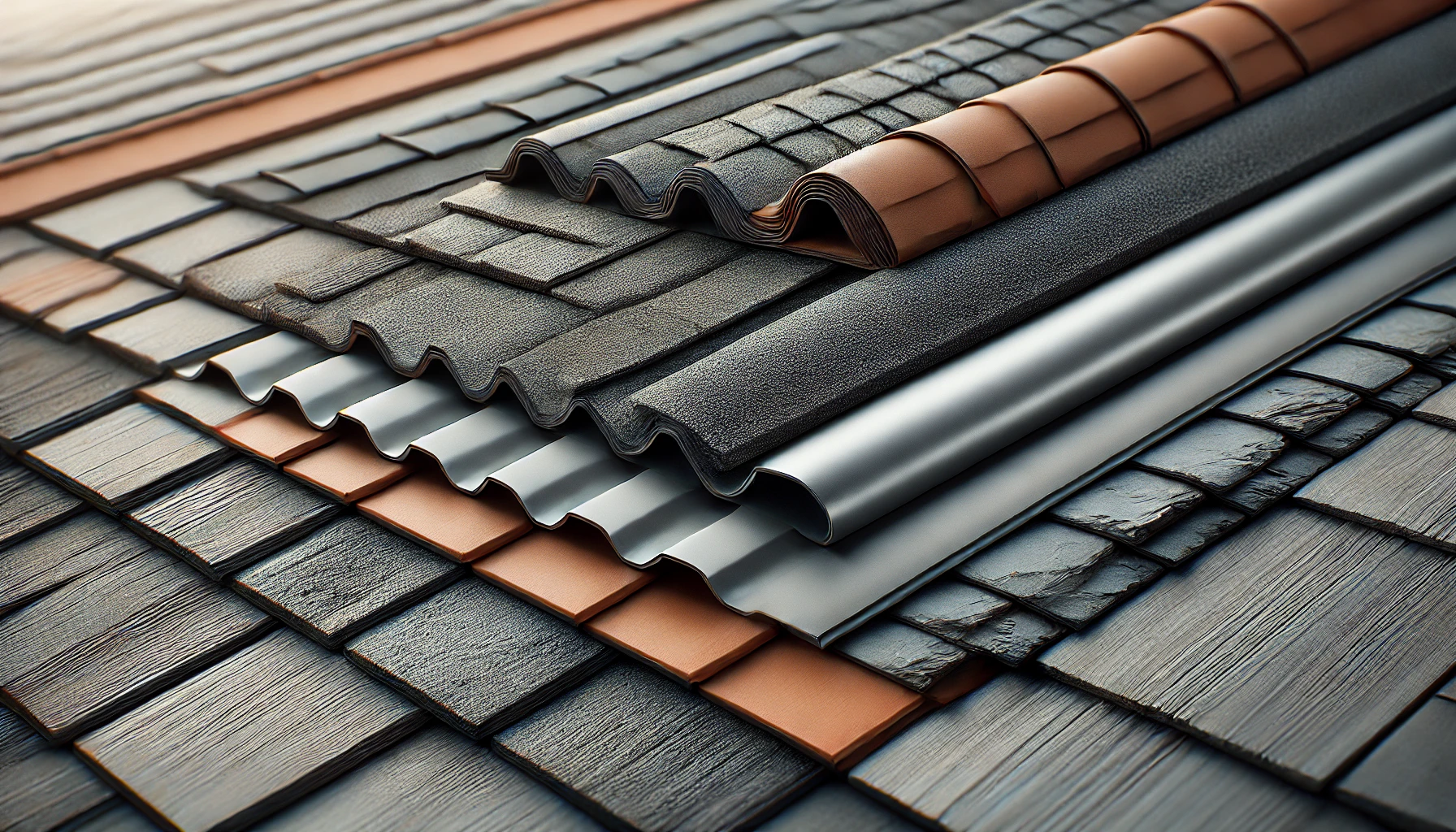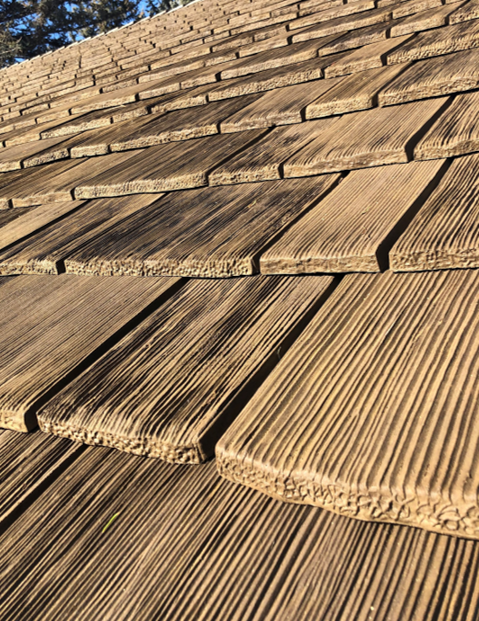Specialist Roofing Tips for Choosing the most effective Materials for Your Home's Requirements
When it comes to picking the ideal roof covering materials for your home, a methodical method is necessary. Trick factors to consider include understanding your regional climate, evaluating the sturdiness of various materials, and assessing power efficiency.
Evaluating Your Environment Conditions

When choosing roofing materials, it is important to consider the particular environment conditions of your area, as these factors dramatically affect the long life and performance of your roofing system. Various environments present unique difficulties, such as high winds, hefty snowfall, severe warm, or extreme moisture. Comprehending these aspects is important for making a notified choice.
As an example, in regions susceptible to hefty rain or snow, materials like steel or asphalt tiles with high waterproofing capacities may be better. Alternatively, in areas with heats, reflective materials such as floor tiles or great roof coverings can help in reducing heat absorption, bring about energy effectiveness and enhanced indoor comfort.
Furthermore, consider neighborhood wind patterns; materials that can stand up to high winds, like impact-resistant tiles or concrete floor tiles, are crucial in hurricane-prone locations. Humidity levels additionally play a duty; in moist environments, choose materials immune to mold and mold, such as synthetic underlayment or treated timber.
Eventually, evaluating your climate conditions will certainly aid make sure that you pick roof covering materials that not just improve your home's aesthetic allure but likewise give durability and defense against environmental stressors. Roofing Lockhart.
Comprehending Product Toughness
Analyzing climate problems is only the very first step in making an educated roof decision; understanding the toughness of the products is similarly vital. The long life and performance of roofing products can vary substantially, influenced by factors such as weather condition exposure, upkeep needs, and product structure.

Moreover, take into consideration the material's resistance to elements like wind, hail, and rain. For instance, impact-resistant shingles and metal roofings are better matched for regions susceptible to serious storms. Furthermore, the product's ability to endure UV exposure is important for keeping appearances and avoiding early deterioration.
Inevitably, picking resilient materials not only adds to the long life of your roofing yet also lessens the need for frequent fixings or replacements, ensuring comfort and protecting your financial investment in time. Evaluate resilience alongside climate considerations to make one of the most enlightened option for your roof covering task.
Power Efficiency Considerations
Energy performance plays a vital function in roof covering decisions, influencing both monthly power costs and overall environmental influence. Selecting the ideal roofing products can significantly lower a home's power consumption by enhancing insulation and showing sunlight.
Among the key factors to take into consideration is the roofing product's thermal performance. Roofing Lockhart. Materials such as steel, clay floor tiles, and particular kinds of tiles are understood for their capability to show solar power, reducing warmth absorption and, consequently, cooling click here for more info expenses. Great roof options, which are made to show more sunshine than common roofs, can better boost power efficiency, particularly in warmer environments
Furthermore, the insulation buildings of roof materials can affect warm retention throughout cooler months. Products with a higher R-value give better insulation, decreasing the demand for home heating and adding to lower energy costs.
It is also essential to think about the roofing system's shade and texture, as lighter colors normally supply far better reflectivity contrasted to darker shades. By meticulously evaluating these factors, home owners can make enlightened decisions that not only improve power efficiency however likewise add to long-lasting sustainability and comfort in their living atmosphere.
Budgeting for Roof Products
Budgeting for roof covering products requires careful consideration and planning to make sure an equilibrium between top quality and expense. The first step in this process is to develop a clear spending plan based on your overall monetary capacities and the specifics of your roof task. It is vital to evaluate the overall area of the roof, as this will directly influence the quantity of product required and, consequently, the overall expense.
Following, research study the various kinds of roof covering materials readily available, noting their cost ranges and toughness. While some products might have a lower initial expense, they could require more frequent repair services or replacements, causing greater long-term expenses. In comparison, purchasing higher-quality materials might yield much better energy efficiency and long life, inevitably saving cash over time.
Furthermore, think about labor prices, which can substantially influence the overall budget plan. By attentively budgeting for roof covering materials, property owners can make enlightened choices that align with their financial goals and long-lasting requirements.
Aesthetic and Design Choices
Selecting roofing materials surpasses simple performance; aesthetic and design choices play a significant role in enhancing the overall allure of a home. The roof is a noticeable attribute that adds to the building design and aesthetic charm of a property. When picking products, think about exactly how they complement the home's exterior, consisting of house siding, home windows, and landscape.
Color is a critical element; it can either balance with or comparison the home's combination. Lighter colors can make a home show up bigger and a lot more inviting, while darker tones can find convey beauty and heat. Appearance likewise matters; for instance, slate offers an innovative, ageless look, while steel roof can provide a streamlined, contemporary aesthetic.
Beyond shade and structure, consider the roof covering's shape and slope. Specific materials might be better matched for certain designs; for instance, clay tiles function well on Mediterranean-style homes, whereas asphalt roof shingles are more functional. Inevitably, the chosen roof covering material need to show the homeowner's individual design while making sure sturdiness and efficiency. By thoughtfully picking visual and style choices, homeowners can substantially boost their residential property's aesthetic allure and total worth.

Verdict
In summary, picking suitable roof covering products necessitates a over at this website thorough examination of environment problems, material longevity, energy effectiveness, and budget plan considerations. Furthermore, visual selections need to harmonize with the overall design of the home. By prioritizing these aspects, home owners can ensure the longevity and performance of their roof systems while improving the home's aesthetic appeal. Ultimately, notified decisions in the roof choice process add to a functional and sustainable home environment.
When it comes to selecting the right roofing materials for your home, an organized approach is crucial.When choosing roof materials, it is vital to think about the particular climate conditions of your area, as these aspects significantly affect the longevity and efficiency of your roofing. By attentively budgeting for roofing materials, homeowners can make educated choices that straighten with their long-term needs and economic goals.
Selecting roof covering materials goes past plain functionality; aesthetic and design choices play a significant function in improving the overall appeal of a home.In summary, selecting proper roof materials requires an extensive evaluation of climate problems, material longevity, energy performance, and spending plan factors to consider.